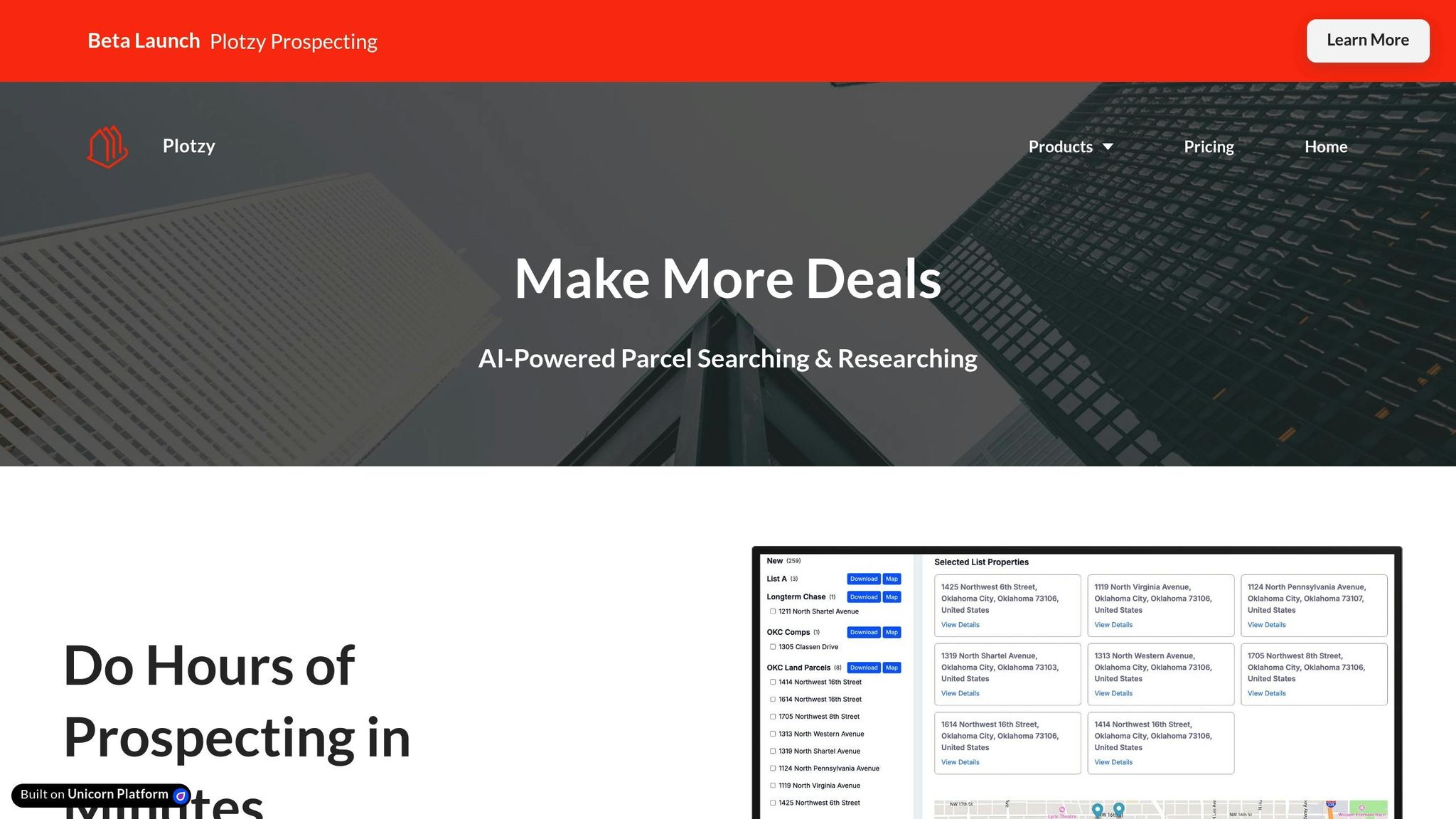Zoning reports are essential for understanding how a property can be used and developed. They simplify local rules, helping brokers, developers, and investors make informed decisions. Here’s why they matter:
- Zoning Rules Impact: They define property use (e.g., retail, industrial), building size, density, and placement, and ensure compliance with local laws.
- Key Users: Brokers, developers, investors, and lenders rely on zoning reports for planning, compliance, and evaluating investment opportunities.
- Main Components: Zoning types (e.g., C-2, M-1), allowed uses, restrictions like height or setbacks, and non-conforming property rules.
AI tools like Plotzy make zoning research faster and more accurate by analyzing municipal codes and generating detailed reports. Always cross-check findings with official maps and records for accuracy.
AI for Due Diligence! How to Review Zoning Rules, Covenants ...
Parts of a Zoning Report
A zoning report simplifies local rules into three main sections, helping you understand what can be built, where it can go, and any exceptions that might apply.
Zoning Types and Allowed Uses
- Zoning classifications (e.g., C-2, M-1)
- Approved primary uses (like retail, office, or industrial)
- Conditional uses that need special permits
This section helps save time by ruling out unsuitable sites and making investment decisions more straightforward.
Limits and Special Districts
- Rules on height, setbacks, and lot coverage
- Overlay zones or special districts (like historic or transit-focused areas)
- Additional design or environmental restrictions
These details set the boundaries for development and influence whether a project is practical.
Non-Conforming Properties
- What qualifies as a non-conforming use or structure
- Rules for continuing, expanding, or addressing non-conforming elements
- Effects on resale value and redevelopment potential
By understanding these exceptions, investors can better assess risks and spot opportunities.
With these details in hand, brokers and developers can move forward with site selection and project planning.
Using Zoning Reports in Commercial Real Estate
Zoning reports provide critical details - such as zoning types, restrictions, and non-conforming rules - that can guide property searches, development planning, and market analysis.
Property Search Methods
You can filter properties by zoning classification and permitted uses. Tools like Plotzy's AI can simplify this process, helping you quickly find parcels that match specific needs, such as retail allowances. This speeds up site selection while ensuring compliance with zoning rules.
Development Planning
Zoning reports outline what’s allowed on a property, development conditions, and compliance requirements. These insights are essential for due diligence and securing financing. Key uses include:
- Determining maximum building height, density, and floor area ratio (FAR)
- Calculating parking requirements based on usage and square footage
- Designing site layouts that align with setback regulations
This information helps teams evaluate construction options and spot any potential hurdles before committing resources.
Market Analysis
Zoning reports can uncover opportunities to increase property value. By understanding zoning restrictions and allowances, you can:
- Identify grandfathered non-conforming uses that may be eligible for redevelopment
- Pinpoint mixed-use or higher-density zones to create diverse revenue streams
- Focus on flexible-use districts that align with current market demands
Plotzy’s tools make it easier to flag parcels with these features, enabling quicker, data-driven decisions.
sbb-itb-11d231f
AI Tools for Zoning Research
AI tools are transforming zoning research by speeding up analysis and improving precision.
AI in Property Research
AI can quickly process municipal codes, ordinances, and zoning maps to identify property restrictions and allowances far more efficiently than manual methods.
Here’s what AI algorithms can do:
- Analyze and cross-reference zoning documents to identify relevant regulations
- Highlight potential zoning issues or redevelopment possibilities
- Automatically create detailed property reports
By integrating these insights into site selection and project planning, AI simplifies processes and enhances decision-making.
Plotzy's Zoning Tools

Plotzy offers an AI-powered platform tailored for commercial real estate professionals. It provides instant access to zoning details and permitted use data, helping users make quicker, better-informed decisions.
Key features of Plotzy's platform include:
- Automated parcel searches
- Instant zoning classification verification
- Filtering for permitted uses
- Custom zoning layers for clear visual analysis
The Pro plan, priced at $200 per month, includes unlimited searches, instant zoning answers, parcel filtering, and zoning layers.
Speed and Accuracy Improvements
AI-driven zoning tools drastically reduce due diligence time from days to minutes, minimize errors, and ensure consistent property analysis.
Finding and Using Zoning Information
Once you've used AI tools to extract zoning data, it's important to cross-check these findings with official local maps and records to ensure accuracy.
Zoning Maps and Records
You can find official zoning records at your local county or city planning department. While some areas provide GIS-based maps, many still rely on PDF or image-based maps. Here's a simple process to confirm a property's zoning code:
- Visit the planning department's website for your county or city.
- Use Google Maps to locate the property's address.
- Match the roads and landmarks from Google Maps with those on the zoning map.
- Identify the zoning code and review the map legend for any restrictions or details.
- For PDF maps, use the search function (CTRL+F or ⌘+F) to quickly locate street names.
Long-Term Compliance
Tools like Plotzy Pro can simplify zoning research. It offers features like unlimited searches, instant zoning details, and custom zoning layers. These layers are especially helpful for keeping track of zoning designations and verifying AI-generated insights against official records over time.
Summary
Plotzy's AI streamlines zoning research, cutting the process from days to just minutes. It provides quick insights into permitted uses, height restrictions, and setback rules.
Key Takeaways:
- Use Plotzy's AI for fast zoning classification and apply filters as needed.
- Verify AI-generated results with local zoning maps for accuracy.
- Keep a record of zoning requirements as part of your due diligence process.
- Stay updated on zoning changes to ensure long-term compliance.


